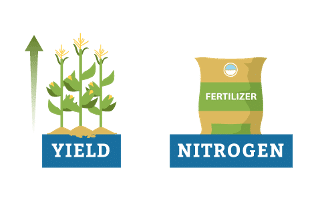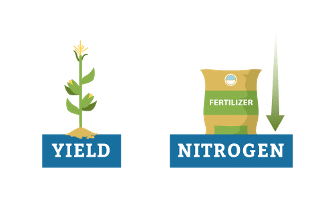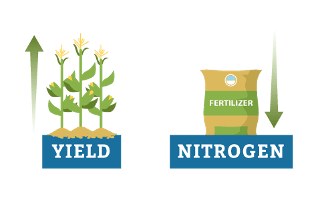Improving Yield Potential with Nitrogen Benchmarking
A study by researchers at the University of Nebraska-Lincoln, funded in part by the Nebraska Corn Board, found that achieving high yields and environmental sustainability are not conflicting goals for producers.
A yield goal is the amount of grain a farmer hopes to harvest at the end of a growing season. This goal is dependent on a number of factors such as field management, seed selection, soil properties, weather conditions and other inputs. One of the most important factors in reaching yield goals is nitrogen management. Farmers must apply the right source, the right amount, at the right time, in the right place to see maximum benefits. Missing one of these variables might result in over-application (wasted resources) or a nitrogen deficit, that results in lower yields.
The goal of this study was to determine how farmers are doing in terms of nitrogen efficiency in their fields. Is it possible to reach the full yield potential while also applying just the right amount of fertilizer? How many farms (if any) are already successfully doing this?

The Nitrogen Balance Approach
Applying sufficient N to meet crop N demand to achieve HIGH yields
N balance = N inputs – N in harvested grain


Results
Using high-quality, field-level data on both yield and nitrogen inputs, researchers found that nearly 25% of fields studied were already reaching predicted yield goals, while maintaining a proper nitrogen balance in the soil. In turn, models from this data indicate that there are opportunities to significantly improve yield and/or reduce nitrogen inputs across Nebraska.
By applying the framework in this study, producers, agronomists and extension agents can make better field management decisions to:
- Increase crop yields using the same amount of fertilizer.

- Maintain crop yields using less fertilizer.

- Increase crop yields while also using less fertilizer.

Applying This Research in the Field
This study reveals that most producers have room to cut costs, while working toward higher yield and greater environmental sustainability. From a field-level view, this research might not give producers a list of explicit changes to make; however, the data justifies the time and effort required to improve nitrogen management.
Beyond the Farm
This study will not only advance farming techniques in the field, but also better inform public policy. It showcases the value of collaboration between universities, natural resource districts and environmental agencies.
Fatima A.M. Tenorio, Eileen L. McLellan, Alison J. Eagle, Kenneth G. Cassman, Daryl Andersen, Marie Krausnick, Russell Oaklund, John Thorburn, Patricio Grassini,
Benchmarking impact of nitrogen inputs on grain yield and environmental performance of producer fields in the western US Corn Belt, Agriculture, Ecosystems & Environment, Volume 294, 2020, 106865, ISSN 0167-8809, https://doi.org/10.1016/j.agee.2020.106865.
(http://www.sciencedirect.com/science/article/pii/S0167880920300505)

